Solo walker, photographer and owner of award-winning gift shop Coralbox, Eilidh Carr shares her wandering around Berneray, her home island in the Outer Hebrides
.
Berneray, or Beàrnaraigh na Hearadh in Scottish Gaelic, is a small island located in the Sound of Harris on the North West coast of Scotland. Berneray, although small in size, is bursting with beautiful beaches, wildlife, flowers, history and more.
The highest point of the island is Beinn Shleibhe, which stands at a height of 93m (305ft) followed by Borve hill at 85m (279ft), with the famous west beach stretching over three miles along the west coast. At only around 10 square km in size it is a small but mighty island. Although Berneray is connected to North Uist by causeway and postal code, the island belongs to the Isle of Harris in the North, part of the Bays of Harris Estate. Current population: 133.
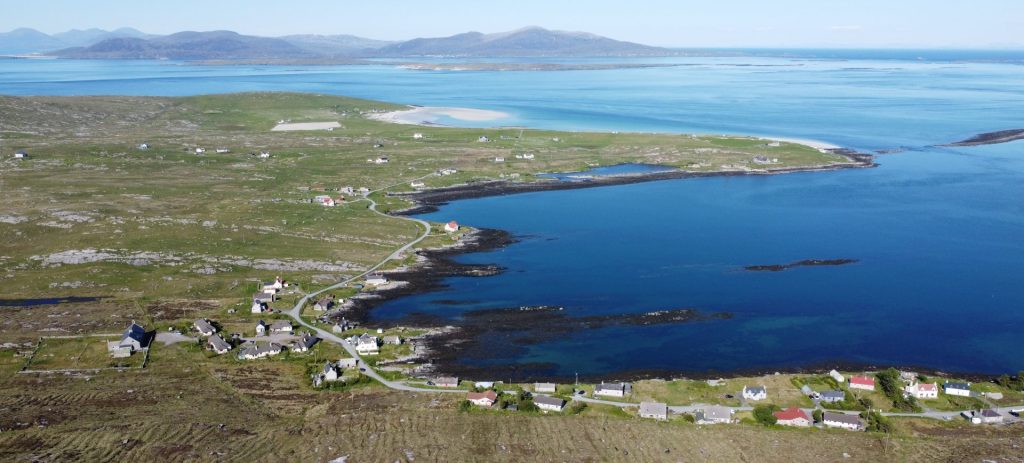
Living on Berneray, it is here I begin my first walk for Slow Ways.
With a picnic made and my rucksack packed, I head off for a walk around the island I call home. I leave from my house, following the single track road through the village of Backhill. The main settlements on the island run along the east, tight to the coast with a number of roads leading off to other townships, Borve and Rushgarry. The west side of the island is flat machair, worked for sheep, cattle and growing crops.
Walking amongst wildlife
As I walk further around Bays Loch, the islands wildlife makes itself known. Numerous birds fly overhead and sheeps emit baas, but my attention is drawn to the noise and commotion of the seals. A viewing point with bench and carpark provides a break to watch the island’s resident seal colony, a mixture of both common and grey seals. Some play and splash around in the water, while others lay high up on top of rocks sunbathing. Near the end of the year, these grey seals breed on the beaches of the nearby island of Shillay. My excitement grows as to what other wildlife I will spot during my walk ahead.
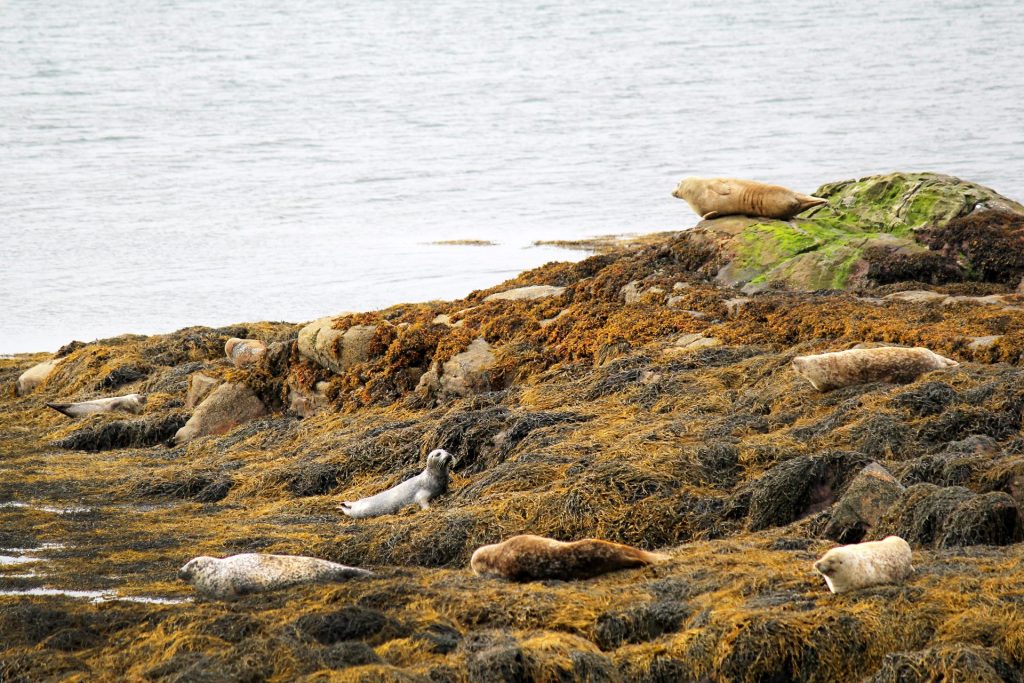
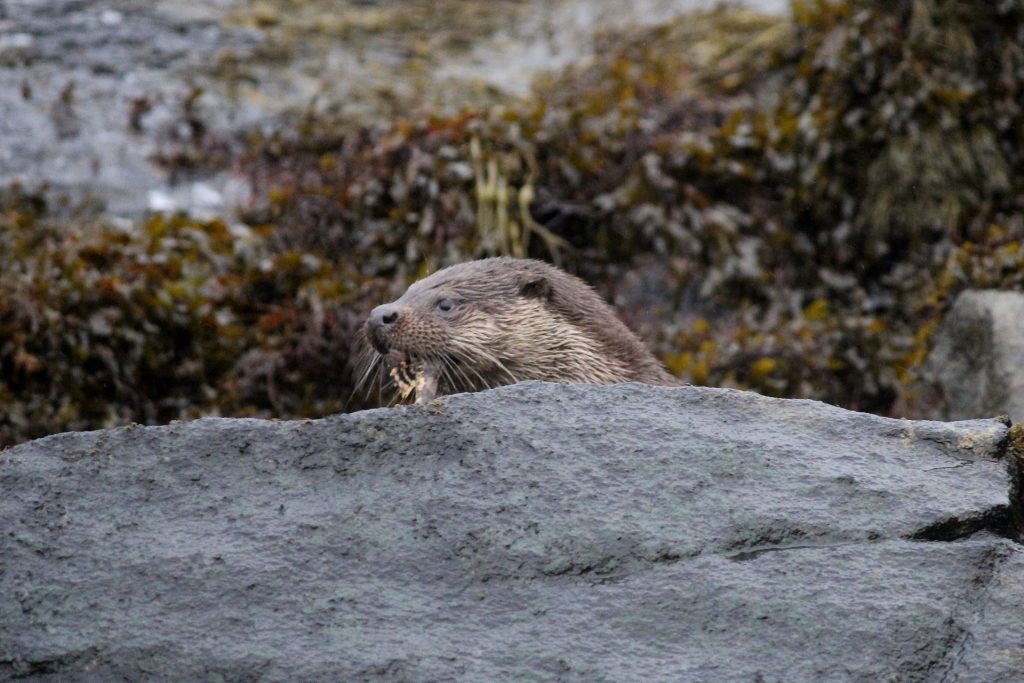
Continuing around the bay the road hugs the coastline to Baile. In the distance to the right is my old primary school. With declining pupil numbers it was closed in 2005, after first opening in 1877. I have wonderful memories from here and growing up on an island as a young child.
Veering right I walk through a small opening in the dunes. As the fresh sea air hits my face I know I am back to one my favourite places, a beach. I love to spend my free time outdoors and there is something very special about a Hebridean beach with no one else in sight.
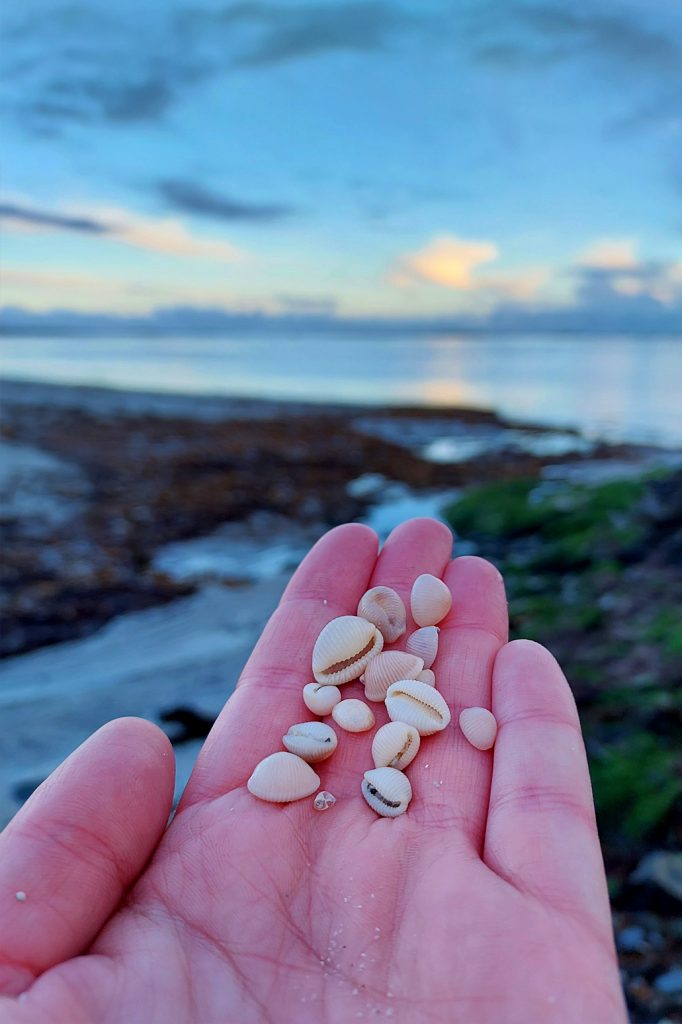
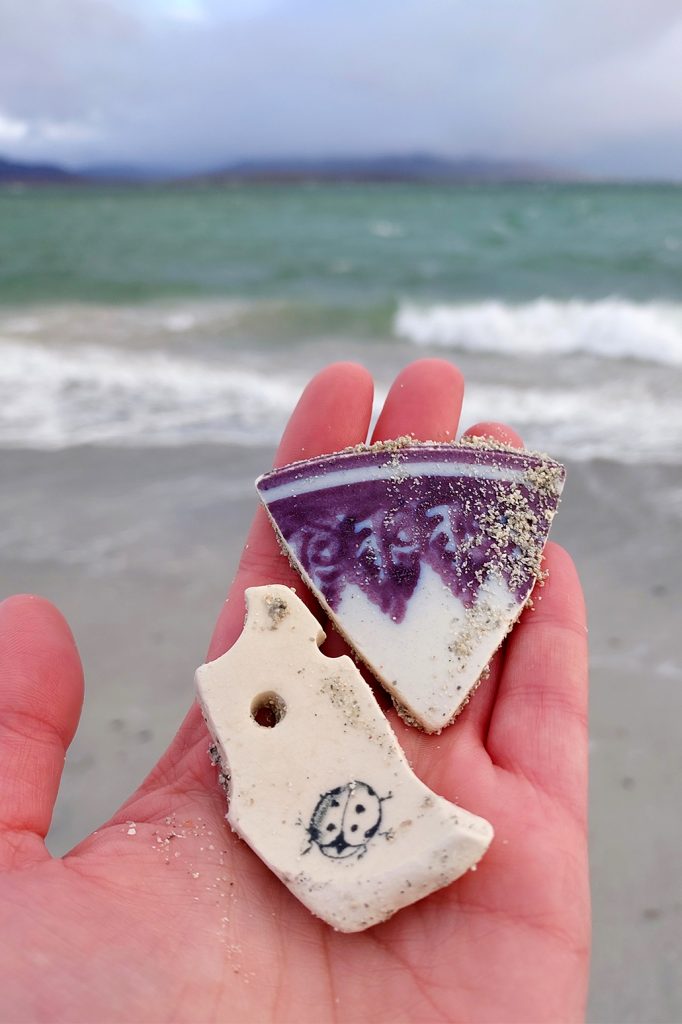
I continue to wander along the sands of east beach following the high tide line, looking for more treasure that the sea has left behind. To my joy I find some cowries hidden amongst the seaweed, other more colourful shells and old pottery, all to be added to my ever-growing collections. Cowrie shells – often said to bring luck and wealth, and once used as currency to trade with – are the highlights of my walks here.
Cowrie shells – often said to bring luck and wealth, and once used as currency to trade with – are the highlights of my walks here
Nearing the end of this first smaller beach, it is time to climb to the highest point on Berneray. This section, guided by marker posts to follow, will take me up and over Beinn Shleibhe. Situated halfway up the hill, is an old graveyard / burial ground. It is an interesting site to visit, with the majority of older graves identified by, at best, maker stones and only a handful with recorded names and dated headstones. A number of these are Commonwealth war graves from the first and second world wars, of men who left our islands to fight.
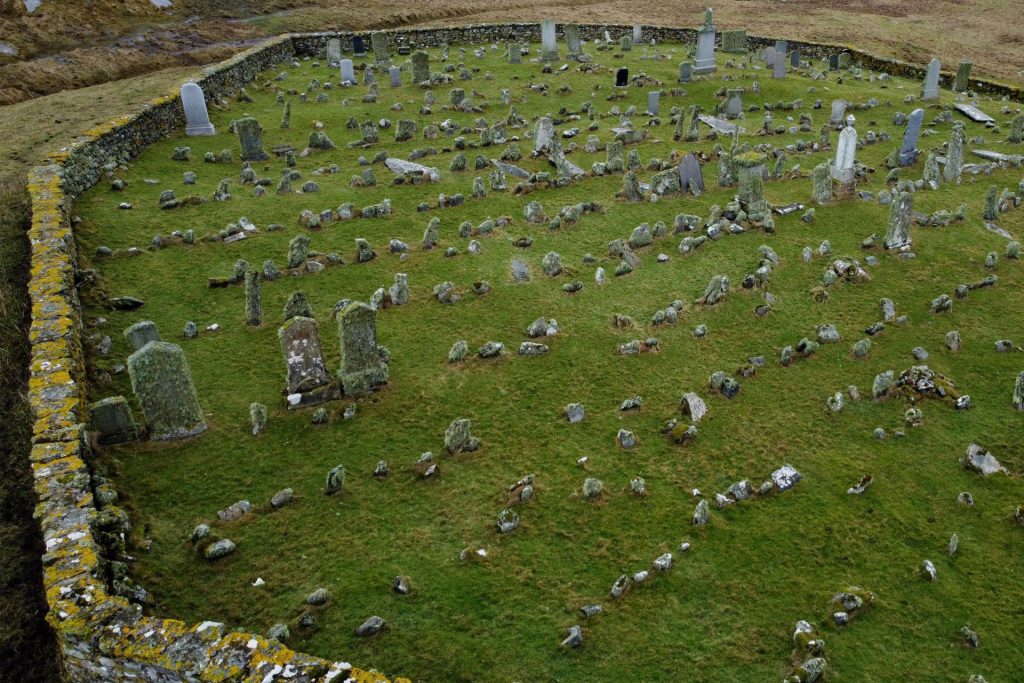
A stunning location, looking back down on the beach I have just walked. I look forward to what is to come shortly.
Dodging the wet and boggy ground underfoot, I make my way up to the trig point on the summit of the hill. I now stand at 93 metres above sea level. On a clear day, it offers 360 degree views out across the Sound of Harris, to Pabbay, Berneray and Uist, even over the Minch to Skye and mainland Scotland. If weather conditions are correct, the remote archipelago of St Kilda situated 40 miles west of North Uist can be visible as a powerful silhouette on the horizon.
Glancing up, I am not the only one enjoying these views. Two sea eagles have joined me. Soaring high, searching for food and enjoying the views, I wonder if there is anywhere else better for them to live their life.
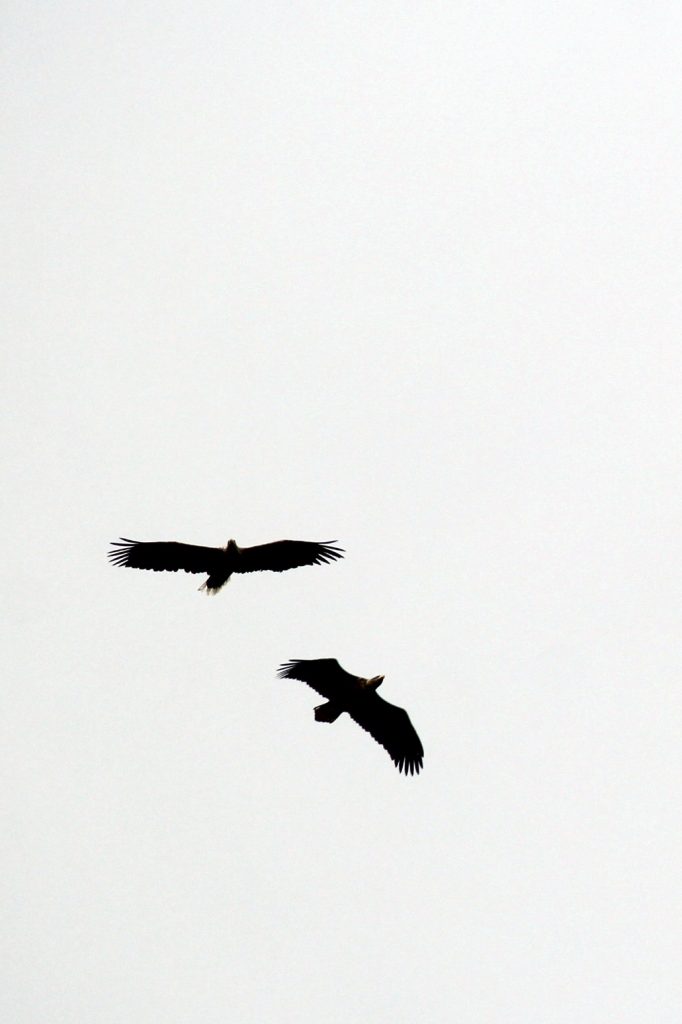
With the eagle still flying above, I drop down behind the hill to explore the west side of the island and begin to walk over the three-mile stretch of white sands of the west beach. I wander along the first stretch, stopping and starting, appreciating the beautiful views and sounds of the moving waves, whilst searching for flotsam and jetsam. This brings me to the corner of the beach, where I wander further rounding the point to stay out the wind. A whole new view of the beach opens up ahead of me.
I have visited this beach all my life and with each visit it still amazes me
I stand for a moment to take in my surroundings. I have visited this beach all my life and with each visit it still amazes me. From the ever-changing weather that alters the colours of the sea and waves, to the colourful summer sunsets that glow orange and pink or even the raging Atlantic storms that roll in, it is my most favourite place in the world to be.
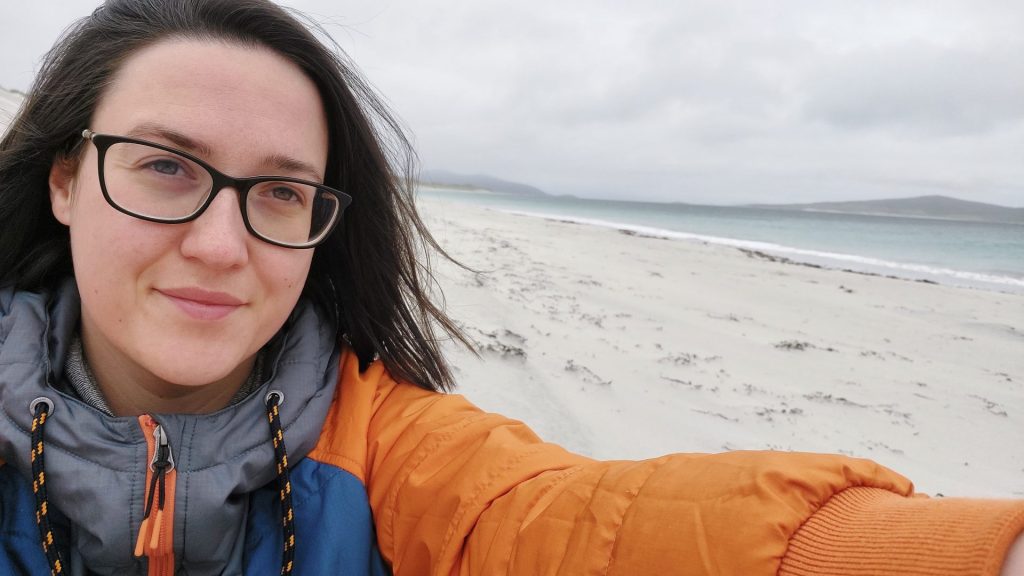
Now is a perfect time to find a spot to enjoy my picnic.
I sit with my back against the dunes, sipping from my flask of tea looking straight out to sea. The next landmass across the North Atlantic Ocean is Canada and America. Living here on the Hebrides, you have to love all kinds of weather. The summers can be beautiful with long hours of daylight, big skies and looming adventures. The winters can be long and dark, storm after storm rolling in. But winters also bring promises of Aurora Borealis and the chance to explore places from a different perspective.
Links across the ocean
Admiring the turquoise waters, I am reminded of the time I found a yellow fishing buoy washed ashore not far from where I am sat now. I love to see what the ocean brings ashore after storms and on that day nothing seemed unusual about it in particular. After recovering the buoy home, I found the boat name was not UK registered. Further research online and on social media led me to a Canadian fishing group, where the amazing wonders of technology connected me with the family who had lost the fishing buoy some five months earlier from their lobster creels in Nova Scotia. It had travelled more than 4500km at sea before washing ashore on Berneray.
the amazing wonders of technology connected me with the family who had lost the fishing buoy some five months earlier from their lobster creels in Nova Scotia. It had travelled more than 4500km at sea before washing ashore on Berneray
Finishing my picnic, I continue to walk the length of the west beach. The weather is starting to change with rain on the horizon; I can feel a chill in the air already approaching. To my right the waves come and go, washing ashore with great energy. To my left the sand dunes stand tall. These dunes back onto machair, which is a low grassy land, fertile and rich with birds, insects and in the summer months, wildflowers. This land is mainly found on the exposed western coast of the Hebrides, Scotland and Ireland.
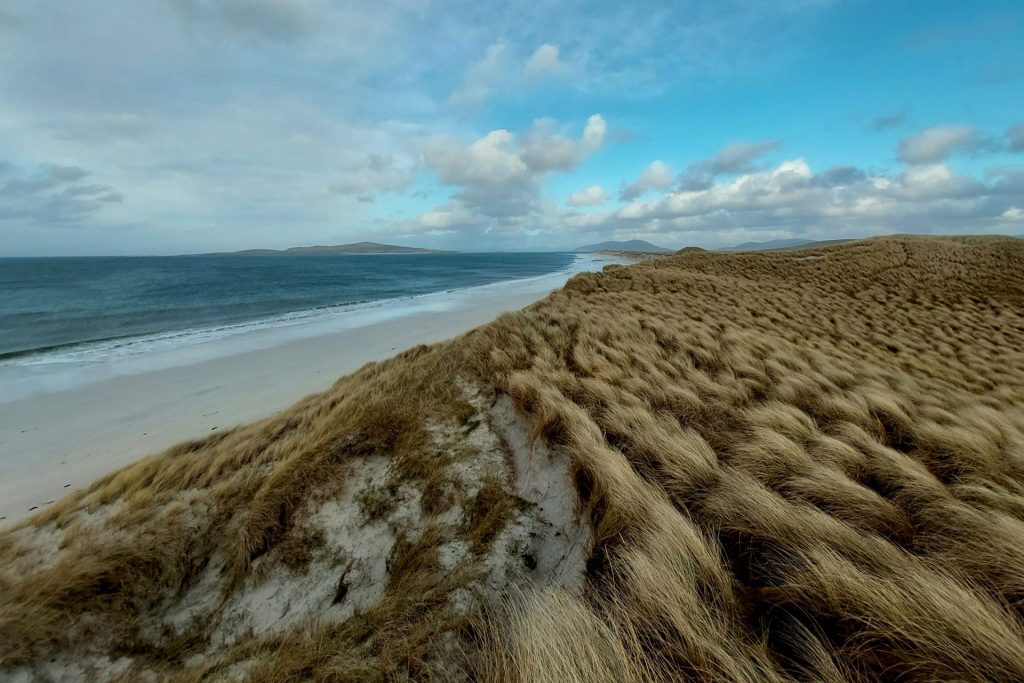
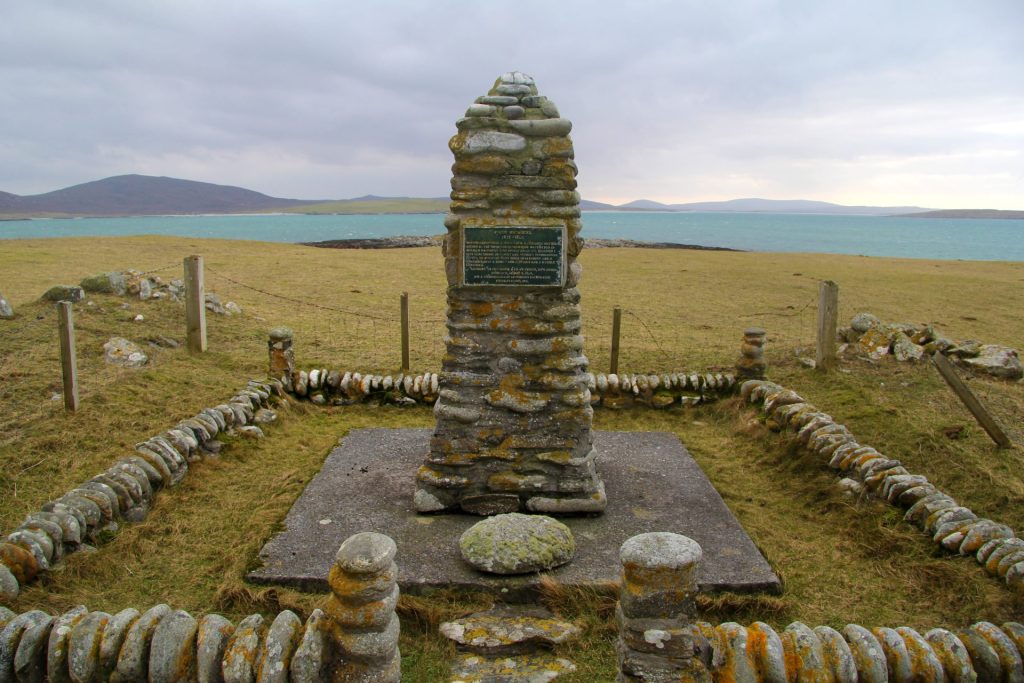
Walking through a blowout in the dunes, I leave the wind and beach behind me. I glance round one last time to catch a glimpse of the sea. I think to myself it is too cold for a swim, I will return another day. I follow the rocky coastline round, passing a stony beach and climbing a stile. I walk by a stone monument to the late Giant MacAskill of Berneray. Born in 1925, in this exact location of the ruined house in which the monument sits, Angus grew to the height of 7ft 9 inches. The monument stands as high as Giant MacAskill once did. Angus is officially recorded in the Guinness Book of World Records as the tallest non-pathological giant. He and his family moved to Cape Breton when he was a young boy.
Following the single-track road back around the crops and machair, I spot the next small hill I am aiming for, Beinn a’ Claidh. On this hill stands Cladh Maolrithe, an ancient standing stone, said to be Bronze Age and buried eight feet into the ground, standing the same height above. Although one of the smaller hills on Berneray, it still offers a great vantage point. In the distance, I spot the ferry to Harris berthing at Ardmaree and vehicles waiting to unload. Berneray is connected to the next island of North Uist by causeway. This was built in 1999 and was officially opened in spring 2000 by Prince Charles.
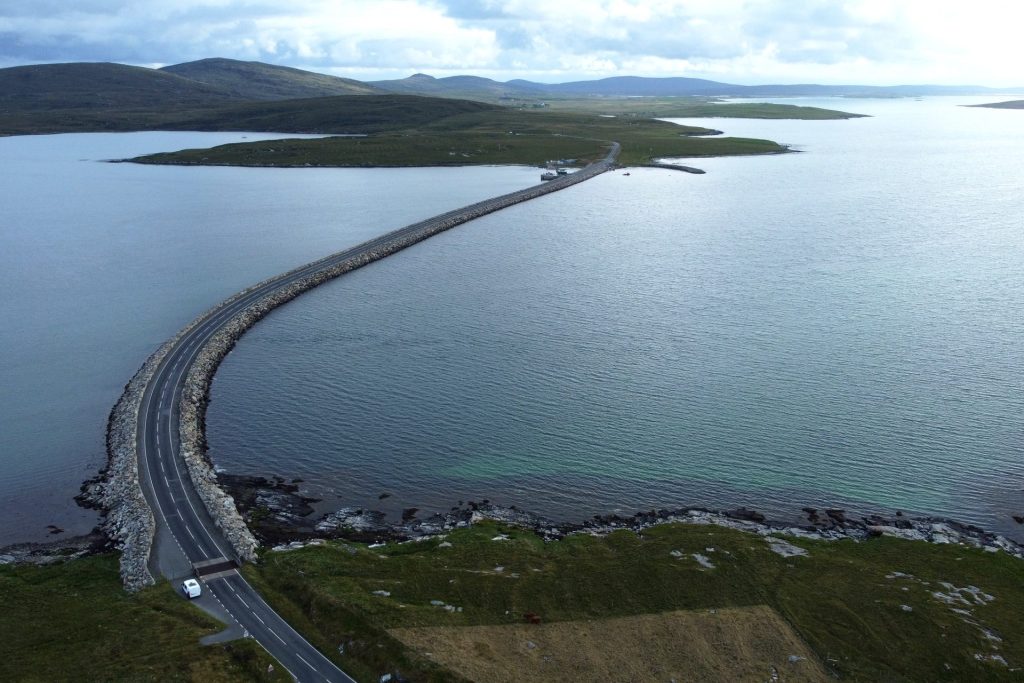
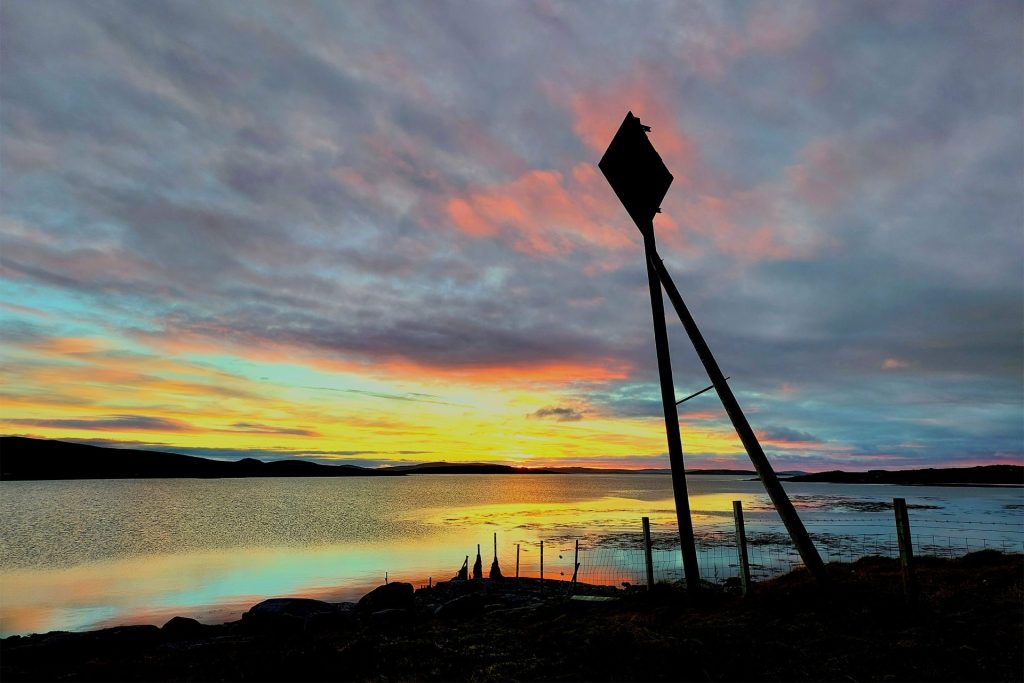
Joining back onto the main road as it twists and turns through the island community, I continue the last stretch of my walk. I pass a small inlet, once used as one of the first piers to bring people and goods ashore to the island. Now the boats lay forgotten after many years at sea. I often wonder of all the stories and passengers that these once carried back and forward across the sounds.
My island home
As I turn the final corner, Berneray’s main fishing harbour and Bays Loch come into view and I know I am nearly home. I have lived here on the island the majority of my life, with five years or so spent on mainland Scotland whilst studying photography. It is a comforting view to see each time as it means I’m back home.
Our house lies on the edge of Bays Loch, so close to the sea that during bad weather and storms the sea spray and waves splash up on the windows. I feel connected to the land, sea and air through my life of beach walks, sea swimming, paddleboarding, van adventures and drone photography. Any day on the Hebrides can bring all four seasons, but I wouldn’t change any part of it.
This is the island I call home.
Eilidh’s walk wasn’t a Slow Way, although Berneray Ferry is a Slow Ways node, or settlement. Most nodes in the network are selected for population size, but in remote places there are sometimes nodes added at key transport or other hubs. This means that there isn’t a Slow Way on the island, but it does feature in the network. Thanks to Eilidh for showing us around!
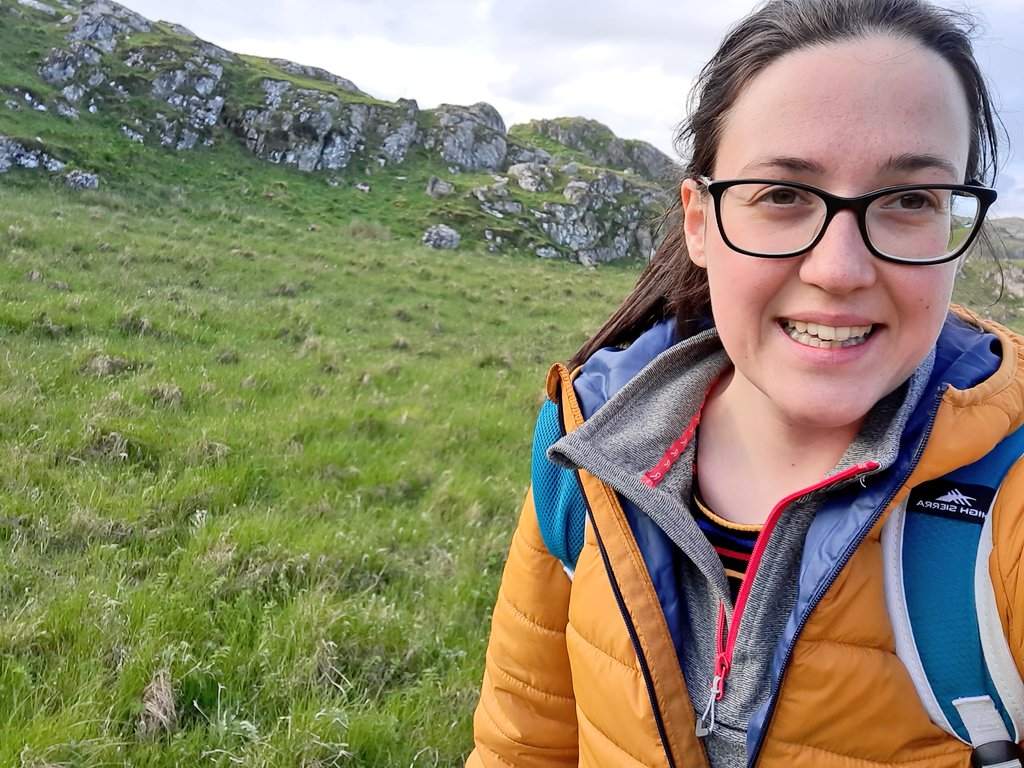
Eilidh Carr
Eilidh brings together her passion for photography and adventure in order to share with others around the world her stories and photographs from land, sea and sky.
Living and working on the west coast of Scotland in the Outer Hebrides allows Carr to combine her photography, both drone work and camera, with her love of fresh air, sea and exploring places old and new. When she’s not travelling in her converted van, you’ll find Eilidh working in her award-winning island gift shop, Coralbox. This small independent business is where her dream of becoming her own boss first started.
As a solo traveller, she takes great pleasure in sharing her escapades and snippers of daily island life through her online social media and photography.